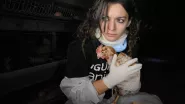It is no secret that photography has been a male-dominated industry since its birth. Historically, women have always been largely under-represented in the creative sector and such a huge gender gap persists still today. It is widely known and a large number of reports confirm that, despite women outnumbering men in art school, there is an alarming problem of representation and gender inequality at a professional level, with female photographers being undervalued in the workplace or being abused at the sole price of gender.
In order to find a simple and immediate evidence of such disparity, I tried and typed ‘advertising photographer’ on Google. Not even one female photographer showed up in the first page. Not even one. There were a bunch of ‘Top 10’ rankings as well and, of course, still no shadow of a female professional which is heavily disappointing considering that about 80% of art and photography school graduates and 63% of enrolled students (data from UCAS) are women, who are also the majority of photo editors and art buyers.
According to Alreadymade, a women's commercial content creator platform, between 2013 and 2017, records from major photography publications and awards organisations attest that male photographers made up 89%-96% of those shooting in the advertising world. A similar discrepancy is true also when it comes to magazine covers and expositions. In fact, in 2017, only 13.7% of cover images from the ten leading fashion publications in the U.S. were shot by women, while in 2016 only 30% of solo shows at London’s major institutions were by female artists.
There are many layers to photography’s gender problem. It is not only about who does the representation (predominantly white men from the developed world), but also about how. On the other side of the camera, in fact, women serve mostly as models to advertise new products, too often portrayed as objects themselves with a consequent and obvious perseverance of sexist stereotypes and attitudes. Such underestimation which, as already mentioned, is centuries old but persists in commercial photography, is also at the origin of many female professionals’ self-doubt. It is by no means surprising that women tend to have the feeling that they are not good enough when it comes to thinking of their career. Women dominate, on the contrary, the family portrait industry, but not for the right reason: they are still tied to the idea that they have a link with children and are therefore naturally expected to do it.
However, the recent and ongoing boom of female-first initiatives and platforms is massively influencing the creative industry with its engagement in helping female-identifying artists rally together against gender discrimination and belittling, discrepancies in pay, policies and practises, as well as encouraging them to keep it up. This is what Foto Femme United too is battling for, with the radical belief that it is necessary to speak up and give women photographers the attention they deserve because they are just as good as men, and it’s about time underrepresentation and misrepresentation end.
Image credit : Catherine Losing




